Losing a limb — whether from an accident, illness, or injury — changes everything in a moment. It’s not just about the physical pain. It’s the shock, the fear, the questions about what comes next. For many, the road ahead feels unclear. What does recovery really look like? When do prosthetics come into the picture? Will life ever feel normal again?
These are real concerns, and you’re not alone in asking them.
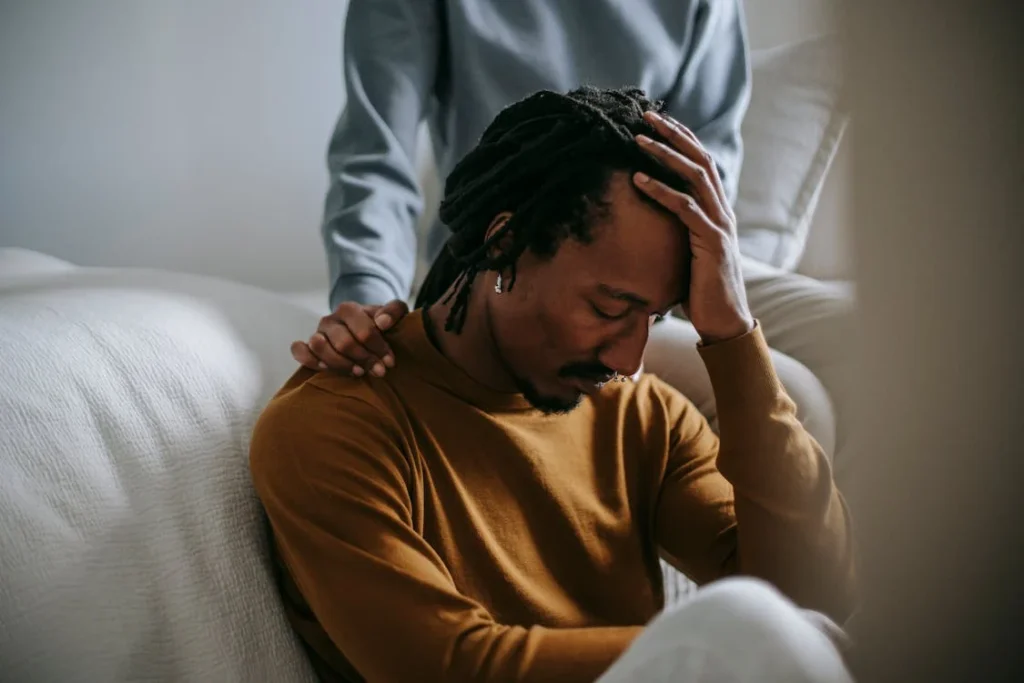
Understanding the First Steps After Limb Trauma
The first days and weeks after limb trauma are the hardest. There’s the physical pain, of course, but also the emotional shock.
Many people describe this time as feeling like everything has gone silent. Suddenly, normal things — walking, holding something, getting dressed — feel far away.
Whether the limb loss happens in an accident, due to an infection, or after surgery, one thing is always true: nothing prepares you for the moment it happens. But knowing what to expect can take away some of the fear.
What Recovery Really Looks Like in the Beginning
In the early days, the main goal is healing. The body needs time to rest, close wounds, and begin rebuilding strength. This part is managed by doctors, nurses, and physical therapists who focus on keeping the area clean and reducing the risk of infection.
There may be swelling, soreness, or phantom limb sensations — the feeling that the missing limb is still there. This is normal, and while it can be confusing or painful, it usually improves with time and the right care.
This is also the time when conversations about the future begin. Doctors may talk about surgical options, rehabilitation, and whether a prosthetic is possible or recommended.
For some people, that talk can feel too early — but it’s not about pressure. It’s about planning ahead so you’re not left guessing when the time comes.
The Emotional Side of Limb Trauma
The physical wound may be visible, but the emotional wound is often hidden. Many people experience grief, fear, anger, or even guilt. You might wonder, “Why did this happen to me?” or “What now?”
These feelings are real, and they don’t mean you’re weak. They mean you’re human. Recovery is not just about healing your body — it’s about healing your mind. And that takes time.
Some people benefit from talking to a therapist or counselor early on. Others just need space and someone who will listen without judgment.
If you’re supporting a loved one through this, remember: you don’t have to fix everything. Just being present, listening, and showing up is already powerful.
It’s also important to talk openly with your medical team. If something doesn’t feel right — physically or emotionally — say it. Recovery works best when you’re an active part of the team, not just a patient.
Getting Ready for Rehabilitation
Once the wound starts to heal and your body becomes more stable, the next step is rehabilitation. This isn’t just about learning to walk or move again — it’s about learning how to live in a new way, with new tools and strategies.
Rehabilitation often starts in the hospital or a nearby center, then continues at home or in outpatient therapy. It might include exercises to build strength, training for balance and coordination, or support for managing pain.
This stage is often slow and frustrating. Progress may come in small steps. But every single step matters. Whether it’s standing up for the first time or learning how to tie a shoe with one hand, each win adds up.
And it’s during this stage that the idea of a prosthetic may start to feel more real. You might begin to wonder: What options are out there? How do I choose the right one? Will it feel natural? Will it really help?
These are good questions — and the answers depend on your body, your goals, and the kind of life you want to rebuild.
Thinking About Prosthetics Early — But Not Rushing In
Many people assume that getting a prosthetic is like going to the store and picking out a pair of shoes. But it’s not that simple.
A prosthetic must match your level of healing, your activity needs, and your comfort level. Getting one too early, before your body is ready, can actually slow down recovery.
But this doesn’t mean you should wait until everything is perfect. Instead, it means being thoughtful. Ask your rehab team to refer you to a prosthetist — a specialist who designs and fits artificial limbs.
These professionals can evaluate your condition and start guiding you through what comes next.
You don’t need to commit to anything right away. You’re allowed to explore, ask questions, and even take time to try out different models.
Some people use temporary prosthetics to get used to the feeling before switching to something more long-term.
The key is to understand that prosthetics are not a one-time fix. They are part of a longer journey — one that keeps changing as your body changes and your goals grow.
Building a Support Network From Day One
You don’t have to go through recovery alone. In fact, you shouldn’t. The people around you — family, friends, care teams, other survivors — can make a huge difference in how you heal.
If you’re someone who prefers privacy, that’s okay. But don’t shut out support completely. Even one or two trusted people in your corner can give you strength on the hardest days.
If you’re a caregiver or friend of someone going through limb trauma, your role is important. You don’t have to say the perfect thing or have all the answers.
Just ask how they’re feeling. Offer help without taking away their independence. And encourage them to stay involved in their recovery — even when they feel tired or low.
As healing continues, these support systems become the backbone of long-term recovery. They help keep motivation high, provide emotional balance, and remind you that progress doesn’t have to happen alone.
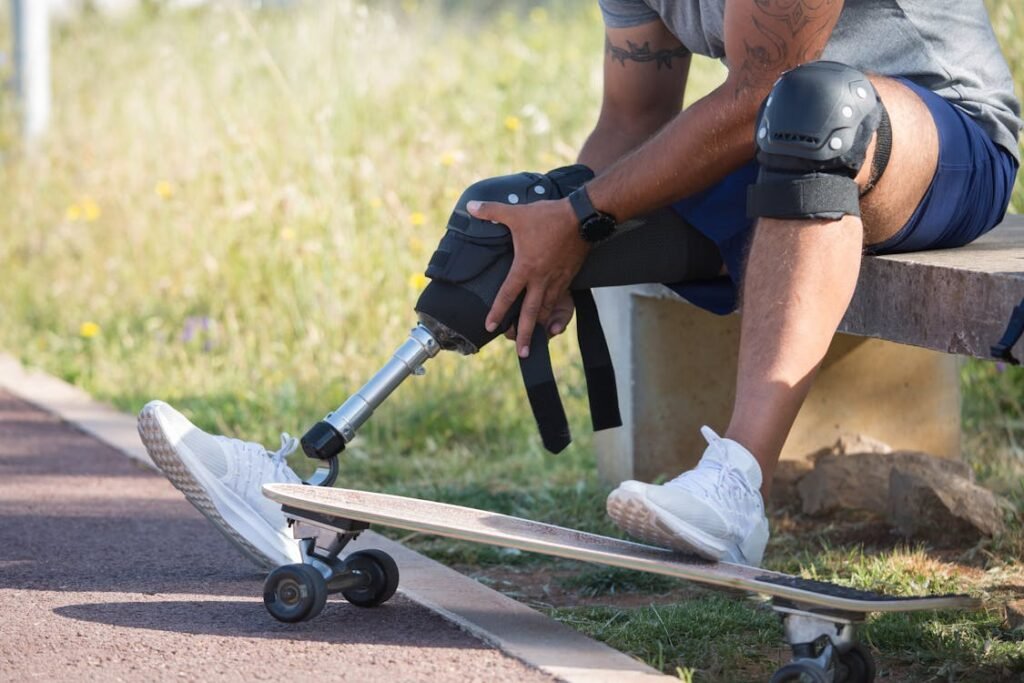
Exploring Prosthetic Options: Finding the Right Fit for Your Life
Choosing a prosthetic is not just a medical decision — it’s a personal one. The right prosthetic isn’t just something that fits your body.
It has to fit your life, your goals, and how you want to move through the world. That’s why this part of the journey requires honest conversation, time, and support.
You don’t have to figure it out all at once. But understanding the basics can help you feel more confident and informed as you explore what’s out there.
Different Types of Prosthetics for Different Needs
The type of prosthetic you need depends on a few important things — whether your limb loss is above or below the joint, how active you are, and what kind of tasks you want to do.
A person who walks to work every day may need a different leg than someone who stays mostly indoors. Someone who uses tools for a job may need a different arm than someone who just wants to hold a coffee cup.
There are two broad categories: upper-limb prosthetics (for hands and arms) and lower-limb prosthetics (for legs and feet).
Within each category, there are even more choices — passive limbs, body-powered limbs, and myoelectric or bionic limbs.
Passive limbs are mostly cosmetic. They look like a natural hand or foot but don’t move on their own. They may be helpful for appearance, balance, or light tasks, but they don’t offer much function.
Body-powered limbs use cables or straps that connect to your shoulder or other muscles. You move your body to make the limb open, close, or lift.
These are sturdy and simple, and many people like them for their reliability.
Myoelectric or bionic limbs use tiny sensors that pick up signals from your muscles. These signals control motors inside the prosthetic, allowing for smoother and more natural movement.
Some can even change grip patterns, respond to pressure, or connect to a mobile app.
This can all sound overwhelming, but remember: your prosthetist is there to guide you. You don’t need to know all the technical terms.
You just need to be clear about your goals and your lifestyle — and from there, your care team can help narrow down what’s right for you.
What Makes a Prosthetic “Right” for You?
A prosthetic isn’t right just because it’s expensive or high-tech. The best one is the one that helps you do what you want to do — safely, comfortably, and consistently. That’s why the fitting process is so important.
Your prosthetist will take measurements of your residual limb, assess your skin condition, muscle tone, and strength, and ask about your daily life.
They might offer you a trial device to test out movements or show you different socket designs. This is your chance to speak up about what feels good and what doesn’t.
Comfort is key. If a prosthetic doesn’t feel right — even a little — it can lead to pain, skin issues, or you simply not using it.
Many people stop wearing their prosthetic not because it didn’t work, but because it didn’t fit their life.
Talk openly about your routines. Do you walk a lot? Do you cook? Do you write or type? Even small details like these can shape what kind of design is best.
Your device should support your real life — not just look good in a clinic.
How Long Does It Take to Get Used to a Prosthetic?
This is one of the most common questions — and an important one. The answer is different for everyone.
Some people take to their prosthetic right away. Others struggle for weeks or even months. The truth is, using a prosthetic is like learning a new skill.
It takes patience, repetition, and the right mindset. You may need physical therapy to build muscle memory, adjust your posture, or learn to use your prosthetic in different situations.
In the beginning, it might feel heavy, awkward, or even frustrating. You might drop things or trip. This is part of the learning process. What matters is sticking with it and giving yourself time.
Your prosthetist will usually schedule follow-ups to make adjustments. Maybe the socket needs to be reshaped.
Maybe the grip is too tight. Maybe you’re not using the right liner. Small tweaks can make a huge difference.
The more honest you are during these visits, the better the result. There’s no shame in saying, “This isn’t working.” That’s exactly what these sessions are for.
What If You Decide Not to Use a Prosthetic?
Some people, even after going through the evaluation process, decide not to use a prosthetic. And that’s okay. This is your body, your life, and your decision.
There are many reasons someone might make that choice. Maybe the device didn’t help enough. Maybe it was uncomfortable. Maybe it just didn’t feel right.
Choosing not to use a prosthetic doesn’t mean giving up — it means you found a different path forward that works for you.
In these cases, occupational therapy and adaptive tools can help you find other ways to move and do daily tasks. Some people use one-handed strategies, walking aids, or assistive tech to stay independent.
There’s no single “right” way to move on after limb loss. What matters is that your path works for you — physically, emotionally, and practically.
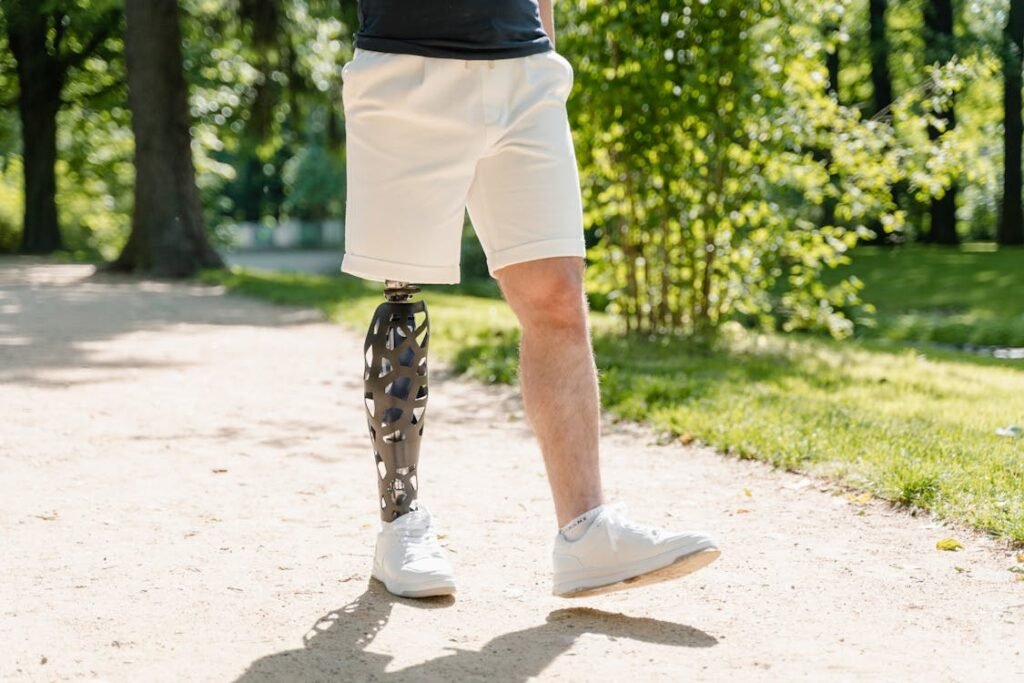
Adjusting to Life With a Prosthetic: What Happens After the Fitting
Getting fitted for a prosthetic is a major step forward — but it’s not the finish line. In many ways, it’s the beginning of a new chapter.
The first few weeks and months after receiving a prosthetic are full of learning. Your body is adjusting, your mind is processing, and your daily habits are shifting.
This period can be exciting and empowering, but also tiring and uncertain. That’s completely normal. You’re not just using a device — you’re building a relationship with it.
The more patient and consistent you are during this stage, the smoother your long-term recovery will be.
Bringing the Prosthetic Into Everyday Life
Once your prosthetic is fitted and adjusted, the focus shifts to integration. This means using it in your regular routines — cooking, walking, typing, commuting, even relaxing.
At first, everything might take longer. Tasks you used to do without thinking may now feel like small challenges.
This is where practice matters. Set small goals for each day. Try holding a cup, standing longer, or taking a walk outside.
You don’t have to do everything at once. Building comfort and control takes time.
You’ll also need to pay attention to your body’s feedback. If something feels sore, tight, or painful, don’t ignore it.
Contact your prosthetist. Minor issues can be fixed easily if caught early — but if left alone, they can lead to serious discomfort or injury.
At home, you may need to make a few changes to your space. Clear walking paths, add grab bars in the bathroom, or use adaptive tools in the kitchen.
These adjustments make life easier and safer as you adapt to your new way of moving.
Building Strength, Balance, and Coordination
Physical therapy doesn’t end with the prosthetic fitting — in fact, it becomes even more important.
Using a prosthetic well requires strength in muscles you may not have used much recently. Balance, posture, and movement patterns also need to be re-learned.
Therapists will guide you through exercises that strengthen your core, improve your gait, and increase flexibility.
You may do step training, object handling, or balance drills. This part of the journey can feel repetitive, but every movement builds confidence and control.
Even ten minutes of daily practice at home can speed up your progress. Simple routines — standing without support, walking short distances, picking up small objects — become more natural over time.
Many people also benefit from gamified rehab tools. These are games and activities that turn movement into fun, interactive tasks.
They help train your brain and body without feeling like “therapy.” Ask your clinic if they offer such tools or apps that can be used at home.
Handling Frustration and Emotional Ups and Downs
Even with good progress, there will be tough days. Maybe your prosthetic doesn’t feel right one morning.
Maybe you drop something at the wrong time. Maybe you feel tired, angry, or simply worn out.
This is part of the emotional rollercoaster that often follows limb trauma. You might feel strong one week and discouraged the next.
You might grieve what was lost, even as you feel hopeful about the future. These emotional swings are common — and healthy.
What helps most is being honest about how you feel. Talk to someone. Write it down. Share your thoughts with a therapist, family member, or support group.
You don’t need to pretend everything’s okay all the time. You’re adapting to something major — and that takes time and space.
If you feel isolated, reach out. Many organizations and clinics offer peer support programs where you can speak with someone who’s been through it.
Hearing their story — and knowing you’re not alone — can make all the difference.
Creating a Sustainable Routine That Works for You
Long-term success with a prosthetic depends on consistency. That doesn’t mean doing everything perfectly.
It means building small habits that make the prosthetic part of your daily life.
Start with a wear schedule. In the beginning, you might only wear your prosthetic for an hour or two a day.
Over time, you can build up. Your goal isn’t to wear it nonstop — it’s to wear it enough that it supports your daily goals without causing pain.
Create a care routine, too. Keep the socket clean. Check your skin for red spots or pressure marks.
Charge the device if needed. Doing these small things regularly keeps you safe and comfortable.
You may also need to track changes. If your weight shifts, your prosthetic may feel different. If your activity level increases, you may outgrow your current device. These are good signs — they show progress.
But they also mean you should stay in touch with your prosthetist for re-evaluation when needed.
Lastly, find joy in your progress. Celebrate small wins. Take photos. Write about your journey. Every step, no matter how small, brings you closer to independence.
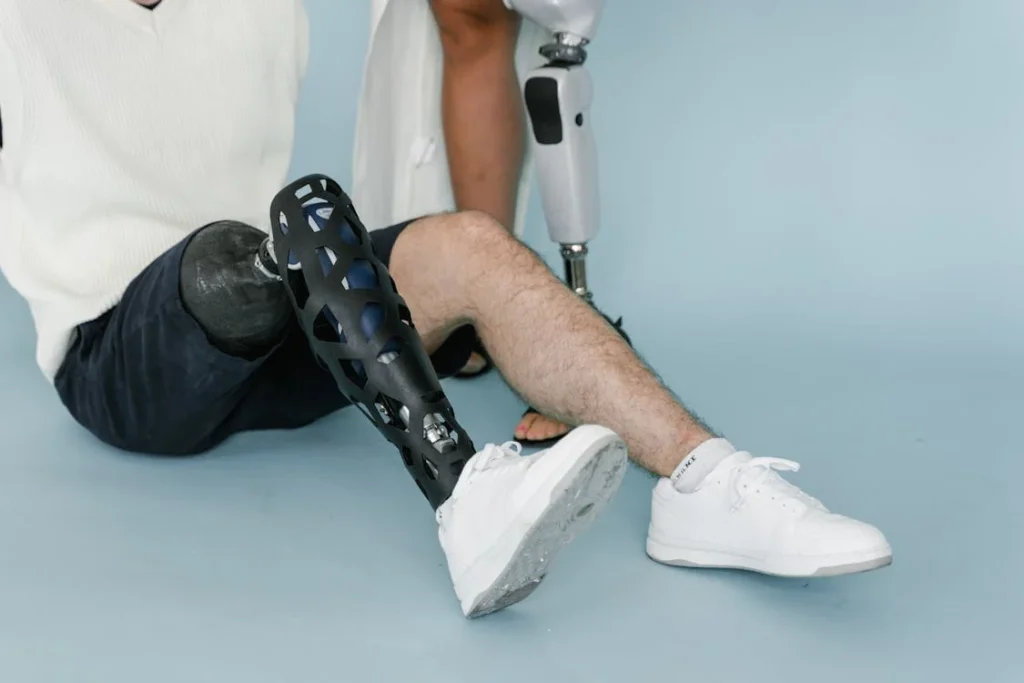
Reclaiming Confidence: Body Image and Identity After Limb Loss
Limb trauma doesn’t just affect the body — it deeply affects how someone feels in their body. After an amputation or serious injury, it’s common for people to feel disconnected from themselves.
The mirror reflects a new image. Movement feels different. Clothes don’t fit the same way. This creates a quiet but powerful shift in how someone sees their body — and their identity.
This emotional shift is rarely talked about in clinical settings, but it matters just as much as physical healing.
Because the truth is, recovery isn’t only about walking again or learning to hold something. It’s about feeling whole, confident, and present in your own skin again.
When the Body Feels Foreign
For many people, the hardest part of limb loss is not pain or discomfort — it’s the feeling that their body no longer feels familiar.
The limb that was once “just there” is gone, and the replacement — the prosthetic — feels mechanical or strange. It can take time to rebuild trust in your body.
This is especially true when trauma was sudden, like in an accident. The brain doesn’t always catch up right away. Some people avoid looking at their residual limb.
Others don’t want to wear their prosthetic in public. These reactions are valid. They don’t mean someone is weak — they mean someone is grieving and adjusting.
What helps is time, exposure, and gentle self-awareness. Standing in front of the mirror. Wearing short sleeves or shorts again.
Slowly reclaiming how you see yourself. These steps are personal, and they can’t be rushed.
Prosthetics as a Part of Personal Expression
A prosthetic doesn’t have to be neutral or boring. For many people, it becomes part of their style — something they personalize to reflect who they are.
Some choose bold colors. Others add artwork, tattoos, or stickers. Some give their prosthetic a name, like a trusted sidekick.
These acts of personalization are more than fun — they are powerful statements of identity. They say, “This is mine. I choose how it looks. I choose how I move.”
This is especially important for younger people or those returning to school or work. When the prosthetic feels like a choice rather than a reminder of loss, it becomes easier to wear it with pride.
And when people notice confidence instead of hesitation, social reactions change too.
Your prosthetist can help with custom designs or cosmetic covers. Even small changes in shape or color can make a big emotional impact.
Don’t be afraid to ask about options that match your personality and lifestyle.
Navigating Social Situations With Confidence
Going out in public for the first time with a prosthetic can feel overwhelming. Will people stare? Will they ask questions? Will they treat me differently?
The answer, honestly, is sometimes yes. But that doesn’t mean you have to hide.
You get to decide how much or how little to share. Some people come up with a short answer for curious strangers.
Others choose humor or confidence as their shield. What matters is that you feel in control of the moment.
It can also help to go out with a supportive friend the first few times. Practice walking into spaces. Sit at a café.
Try wearing something that shows your prosthetic a little. These are brave steps — and each one helps rebuild self-trust.
You don’t have to educate everyone. You don’t have to answer every question. You just have to show up, as you are.
The Long Journey Back to Self
Confidence doesn’t return overnight. It builds in layers. First through physical milestones — like learning to balance or grip again. Then through social ones — like going back to work or school.
And finally, through emotional ones — like laughing in public, dressing up again, or looking in the mirror and feeling proud.
This journey is not linear. Some days you’ll feel strong. Others, you might feel like starting over. That’s part of healing.
What matters is that you keep coming back to yourself — and that you know this new version of you is just as real, just as whole, and just as worthy.
Support from therapists, peer mentors, or even art and movement therapy can help.
So can journaling, photography, or joining a support group. Expression leads to acceptance — and acceptance leads to strength.
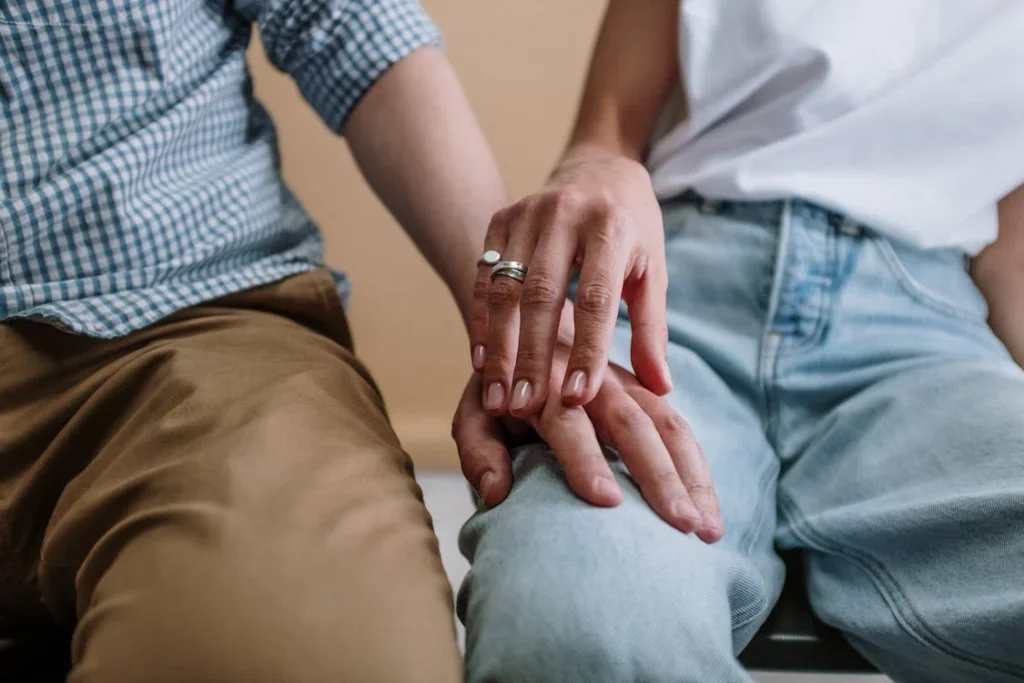
When You’re the Caregiver: Supporting Someone Through Recovery Without Losing Yourself
Behind every person healing from limb trauma, there’s often someone else quietly holding everything together — a spouse, a parent, a friend, a sibling.
Caregivers are the silent backbone of recovery. They drive to appointments, learn how to clean wounds, encourage therapy sessions, and carry the emotional weight when their loved one can’t.
But caregiving after limb loss isn’t just about physical help. It’s about emotional balance, patience, boundaries, and long-term stamina.
And if you’re in this role, one of the most important things to remember is this: you cannot pour from an empty cup.
What Caregiving Actually Feels Like
At first, it may feel like you’re running on adrenaline. You step in because you have to.
You’re the one who makes sure medication is taken, pain is managed, the next appointment is booked. You might help with dressing, bathing, moving around. And you do it with love.
But as the days stretch into weeks and months, that rush fades. The tiredness sets in.
And sometimes, so does guilt — guilt for needing a break, for feeling frustrated, for wishing things could go back to how they were.
This is normal. And it’s okay to admit it.
Caregiving is hard, even when it comes from the heart. You’re allowed to feel overwhelmed.
You’re allowed to wish for space. And you’re allowed to say you need help.
Helping Without Taking Over
As your loved one starts recovery and moves toward using a prosthetic, they need to regain their independence.
This is a critical part of healing — not just physically, but emotionally. Letting them take the lead, even when it’s slower or harder, is part of restoring confidence.
It’s natural to want to step in and do things for them. But whenever possible, do things with them instead.
Stand nearby, but let them practice. Be supportive, but resist the urge to over-correct. Celebrate effort more than perfection.
This doesn’t mean you stop helping — it means you shift from doing everything to creating space for growth.
Caregiving, at its best, is a shared rhythm. Sometimes you take the lead. Other times, you follow.
Communication Changes Everything
One of the hardest parts of recovery is unspoken tension. The person healing may feel like a burden.
The caregiver may feel exhausted but afraid to admit it. These quiet feelings can grow into resentment, even in the strongest relationships.
That’s why regular, honest conversations matter. Not every talk has to be deep.
Sometimes it’s just checking in: “How are you feeling today?” or “What would make today easier for you?” And sometimes, it’s being brave enough to say, “I’m feeling tired. Can we make a plan together?”
Recovery is a team effort. And teams work best when everyone has a voice.
If talking feels hard, consider writing notes or journaling. Sometimes it’s easier to express emotions on paper than in person.
What matters is keeping the emotional connection open — not perfect words.
Caring for the Caregiver
Your well-being matters just as much as the person you’re supporting. If you break down, everything becomes harder.
But self-care doesn’t have to be grand. It can be small: a morning walk, five minutes of quiet, a phone call with a friend. These moments refill your energy.
Make space for rest. Eat real meals. Step outside. Ask someone to take over for a few hours.
If possible, connect with other caregivers — in person or online. Just knowing someone else gets it can bring deep relief.
You’re not selfish for needing a break. You’re sustainable. And that’s the kind of caregiver your loved one truly needs — not someone who burns out, but someone who endures.
Recognizing the Journey is Yours, Too
Limb trauma changes more than one life. It changes the lives of everyone connected to the person healing.
As a caregiver, you’re on a journey too — one that’s full of challenges, yes, but also growth.
You’ll learn more about patience, resilience, and empathy than most people ever will.
You’ll discover what real support looks like. And you’ll see — often up close — the strength it takes to rebuild a life.
That’s something worth honoring. And that’s why, throughout this process, your story matters too.
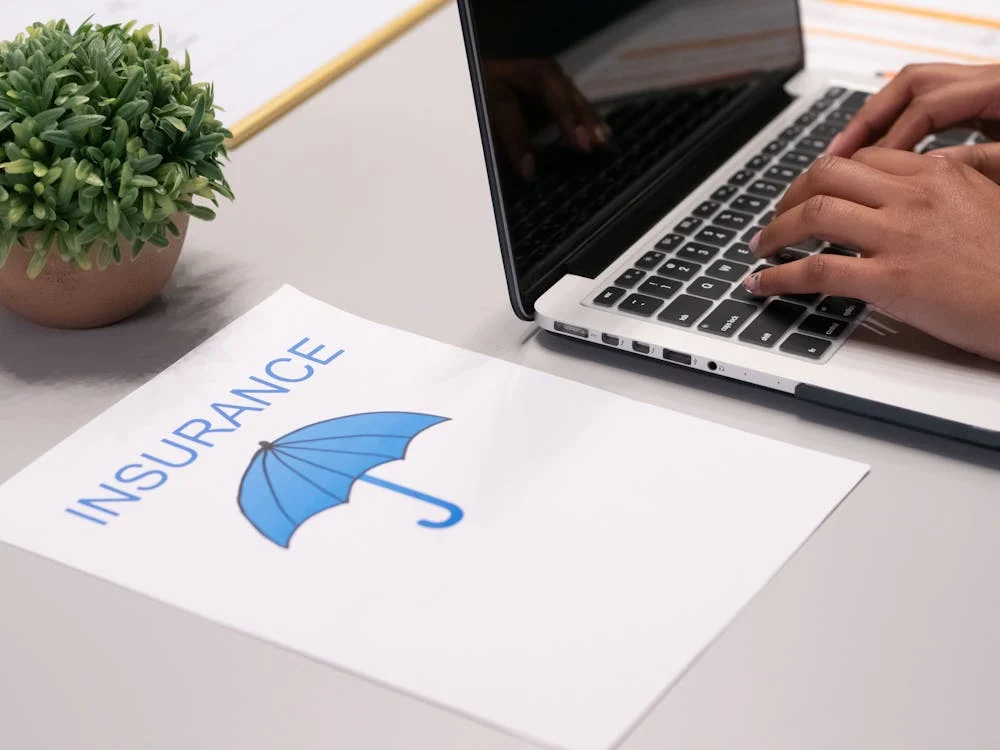
Navigating the Paper Trail: Legal, Insurance, and Documentation Challenges After Limb Trauma
When someone loses a limb, the emotional and physical challenges are immediate and visible. But there’s another layer that can quietly pile up — the administrative weight.
Hospitals, insurance forms, disability certificates, workplace documentation, government IDs — all of it arrives fast, often at the worst possible moment.
For many families, this “invisible load” becomes one of the biggest obstacles in recovery. It slows down access to prosthetics.
It delays rehab. It creates stress and confusion at a time when clarity and support are most needed.
Knowing what to expect — and what you’re entitled to — can make this part of the journey smoother, even if it’s never exactly easy.
Understanding Medical Documentation
After surgery or trauma, one of the first things hospitals issue is a discharge summary. This document outlines what happened, what treatment was given, and what kind of recovery is expected.
It’s important. This single piece of paper is what connects you to further services — physiotherapy, prosthetic assessments, insurance claims, and even legal rights.
Ask for a copy, and make sure you understand what’s written in it. If you don’t, ask the doctor to explain it in simpler terms.
You’ll need this document again and again — so keep both a physical copy and a digital scan.
In cases of amputation due to accident, medical negligence, or workplace injury, an official record becomes even more important — especially if compensation or legal action might be involved.
The Maze of Insurance Claims
If you have health insurance, it may cover part of the surgery and rehabilitation. But prosthetics are often treated as “assistive devices” — a separate category that may or may not be fully covered.
Some policies cover only basic options. Others exclude prosthetics entirely unless you’ve added a special rider.
The first step is to contact your insurer and ask detailed questions. What is covered? What documents are needed? Is prior approval required? What’s the claim limit?
Keep every bill, prescription, diagnostic report, and referral. These are not just papers — they are proof. Missing one can delay the process by weeks.
If you’re struggling to get clear answers, ask your prosthetist or rehabilitation center — many have experience working with insurers and can guide you through the exact steps.
Some clinics even help prepare the paperwork directly.
Don’t assume something will be covered just because a doctor recommended it. Always check with the insurer first — and if needed, appeal decisions that seem unfair.
Many families have successfully pushed back and won better coverage simply by being persistent.
Disability Certification and Government Benefits
In India and many other countries, individuals with limb loss are eligible for government-issued disability certificates. These documents are not labels — they are tools.
They unlock access to public transport benefits, government rehab centers, job reservations, scholarships, and sometimes financial aid for prosthetic care.
To get one, you’ll usually need to visit a government hospital with all your medical records.
A disability board will examine your condition and determine the degree of disability — often as a percentage.
The process can be slow, and sometimes confusing, but it’s worth completing. Having a certificate opens up long-term support that can ease the financial and social burden of limb loss.
Some states also offer unique disability cards or digital platforms to apply online. Local NGOs or disability advocacy groups can help you with the process if needed.
Updating Legal IDs and Employment Records
After limb trauma, you may also need to update documents like your Aadhaar card, PAN, or employment health records.
If your ability to work has changed, or if you need workplace accommodations, make sure HR is aware and the proper paperwork is submitted.
In India, persons with disabilities are protected under the Rights of Persons with Disabilities Act.
This law requires public and private employers to provide equal opportunity and reasonable accommodation. That includes ramps, adjusted schedules, or time off for rehab — if needed.
You don’t have to ask for charity — you can ask for your rights.
When Legal Support Becomes Necessary
In some cases, limb trauma is the result of a workplace injury, road accident, or unsafe environment. If you believe someone else’s negligence played a role in your loss, it’s okay to explore legal options. This isn’t about blame — it’s about justice and support.
Speak with a legal aid clinic or advocate. Many organizations offer free consultations. Documentation from the hospital, police reports, and witness statements will be important.
A case can take time, but the outcome may provide compensation that helps cover long-term costs, including prosthetic care.
Even without a legal case, knowing your rights as a patient and a person with a disability gives you power — the power to speak up, push back, and demand the support you deserve.
Conclusion
Limb trauma changes life — suddenly, deeply, and in more ways than most expect. But recovery is not just about healing a wound or learning to use a prosthetic. It’s about rebuilding confidence, navigating systems, and rediscovering what’s possible.
From early rehab and prosthetic choices to emotional growth, social reintegration, and legal rights, every part of the journey matters. And while the path is never easy, it’s absolutely navigable — especially with the right support, information, and mindset.
You don’t have to have it all figured out. You just have to keep showing up. Step by step, you begin to move forward — not as you were, but as someone just as capable, just as whole, and perhaps even stronger.
Whether you’re the one recovering or the one standing beside them, know this: you are not alone, and you are not behind. You are on your way.



